 |
| Nam Ha people have been growing red-fleshed dragon fruit for about 12 years and is the locality with the largest dragon fruit growing area in the province. |
However, due to the unstable price of dragon fruit , the area planted with this fruit is showing signs of decreasing compared to previous years .
• 12 YEAR JOURNEY IN THE NEW LAND
Entering the fourth harvest year, Ms. Vu Khao's family (Nam Ha village, Nam Ha commune) is busy taking care of 2,000 red-fleshed dragon fruit pillars planted on an area of about 2 hectares every month.
Mrs. Khao's dragon fruit garden is considered one of the most beautiful in the commune because right from the beginning of planting, she was instructed by the Nam Ha Fruit Cooperative on planting and care techniques. Mrs. Khao also boldly invested in installing an automatic irrigation system and a methodical lighting system. On this area, each year, Mrs. Khao's family harvests about 100 tons of fruit.
Ms. Khao shared that, thanks to mastering the techniques, most growers can now process dragon fruit to flower and bloom off-season as they wish, meeting the market demand all year round. The special thing is that due to the suitable soil, dragon fruit grown in this area all have an average weight of about 1 kg when sold to traders. The fruit weight is quite large, meeting the needs of consumers, especially for display on Tet and full moon days.
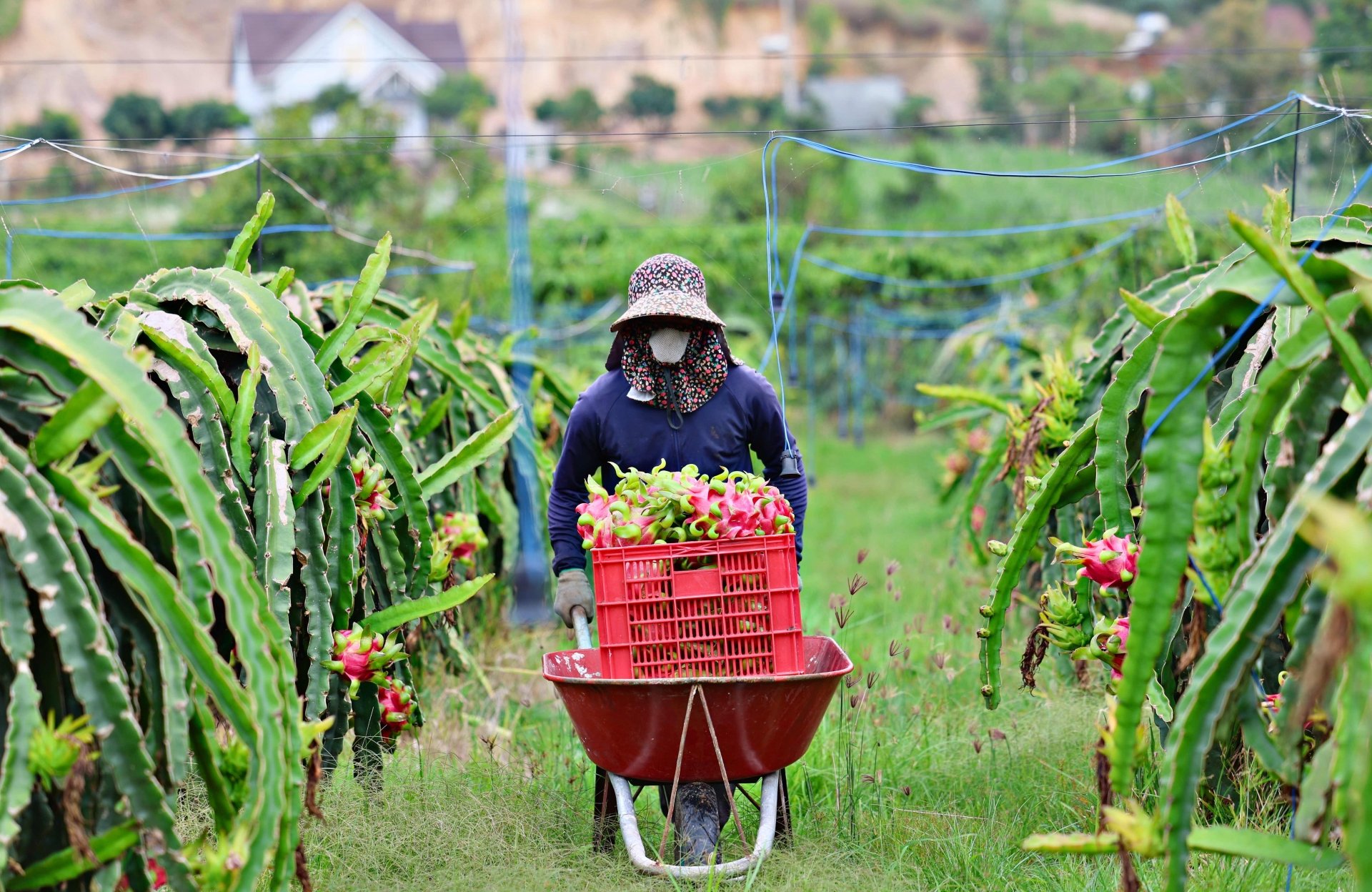 |
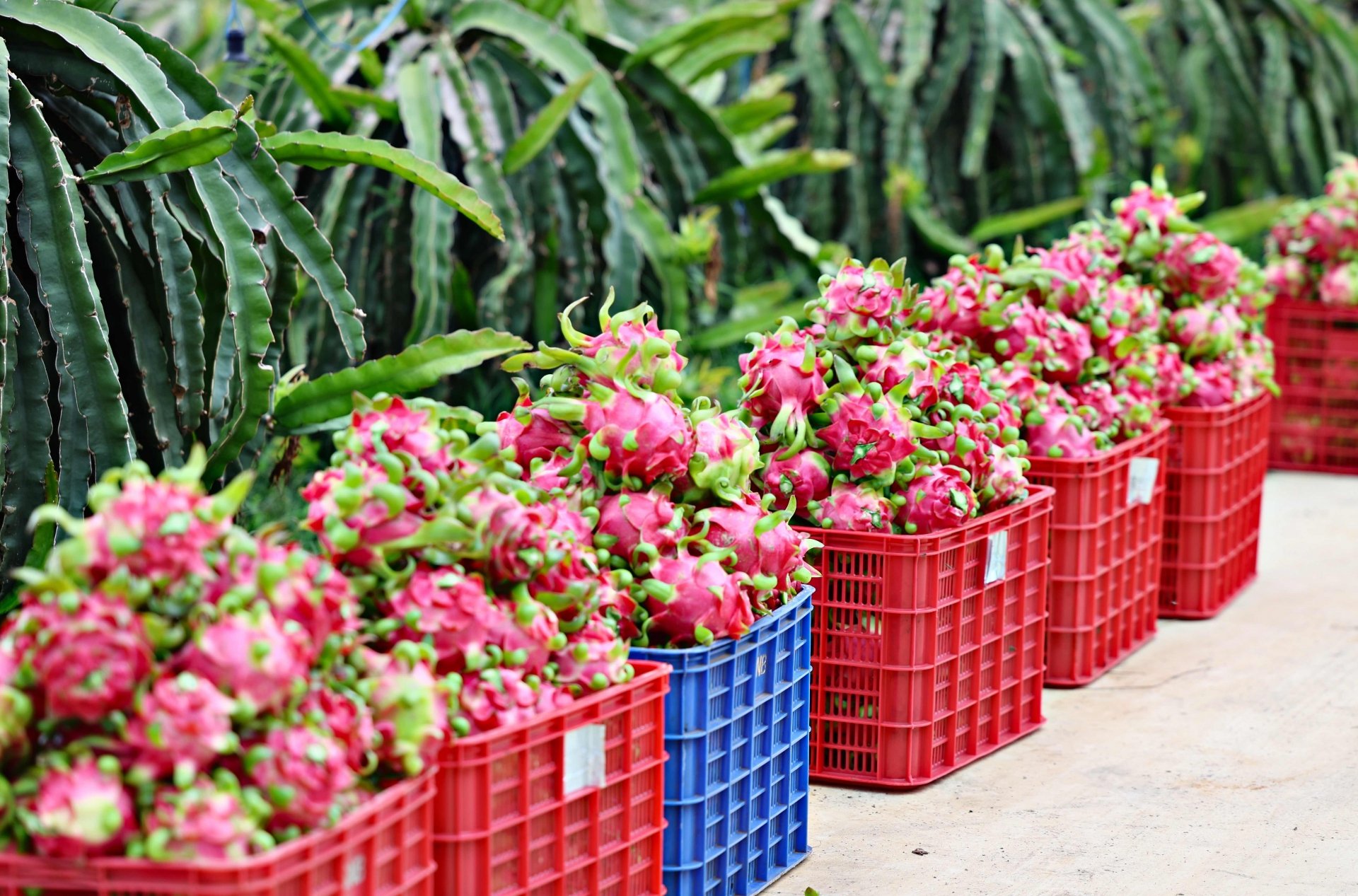 |
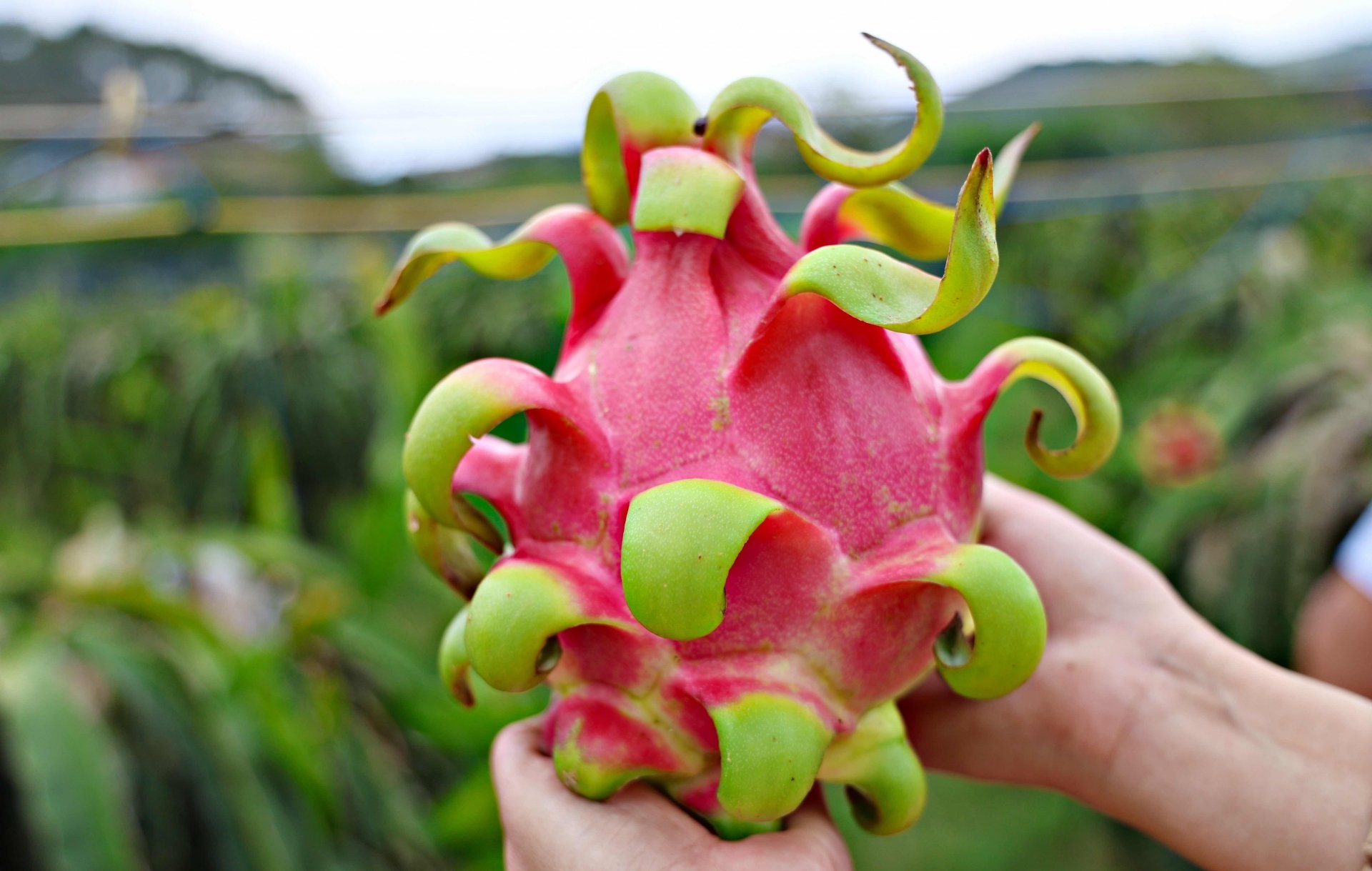 |
| Nam Ha red-fleshed dragon fruit has high yield, sweet fruit, the flesh has a beautiful purple-red color. |
According to Ms. Khao, growing dragon fruit is not too difficult but requires growers to be meticulous in every step. Especially during the fruit setting stage, there must be care techniques to make the dragon fruit look beautiful, round and round, and supplement nutrients to create sweetness for the fruit. At the same time, during the fruit's development, growers must apply medicine and stroke the ears 2-3 times to keep the dragon fruit ears green, long, and thick when ripe.
Having settled in Nam Ha since 1987, Ms. Khao realized that this place has suitable climate and soil conditions for many different types of crops, from vegetables, flowers to fruit trees and industrial crops. In particular, dragon fruit grown here has a longer growth cycle due to the cool climate all year round, about 45-50 days to harvest, one and a half times longer than in hot regions. Thanks to that, the fruit when ripe has a beautiful color, is very sweet, can be stored for a long time without spoiling, and is favored by traders.
Currently, there are units that buy dragon fruit from people, but the price fluctuates frequently. Particularly since the beginning of the year, the selling price at the garden is about 11,000 to 13,000 VND /kg , so the income is not much better than other crops.
“Although I have invested in planting 2,000 dragon fruit pillars for a long time, I am still calculating to gradually switch to other crops if prices remain unstable as they are now,” Ms. Khao shared.
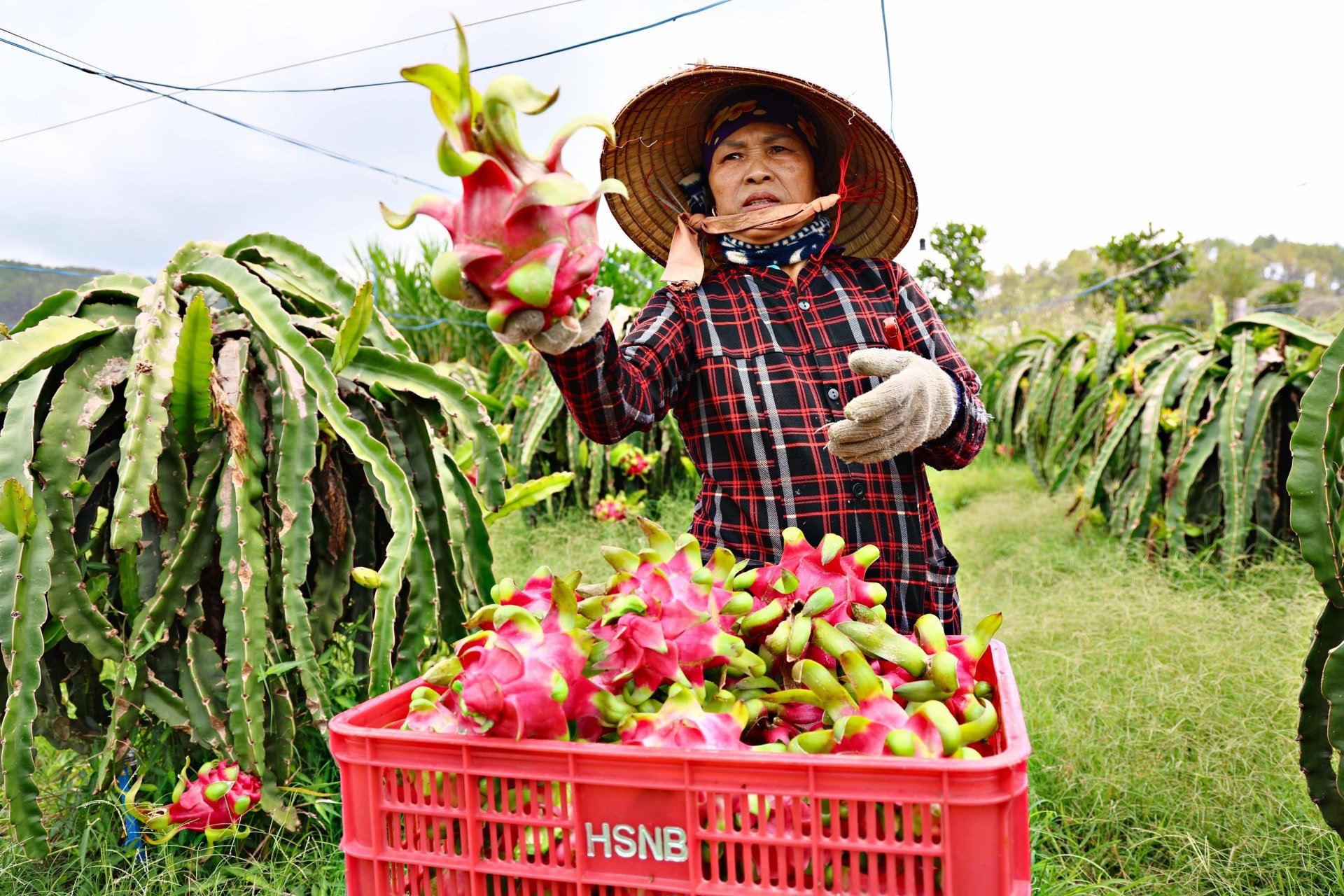 |
| Ms. Vu Khao (Nam Ha village, Nam Ha commune) with a 2-hectare dragon fruit garden in peak harvest season. |
Similar to Ms. Khao, Mr. Nguyen Van Han , a household growing 4,000 m2 of dragon fruit about 500 m away, said that the potential for developing this fruit is huge, but the barriers are still high investment capital and care. Meanwhile, in reality, in the past 3 years, the selling price has fluctuated erratically, lacking stability, and at times the selling price is even lower than the production price, so people are not confident in investing in long-term, sustainable development.
"Dragon fruit farmers are very worried about the price of agricultural materials and labor. People want the output of dragon fruit to be stable. Currently, I only maintain the current area, not daring to risk expanding the area " - Mr. Han wondered.
Mr. Han sold dragon fruit on June 15 at the garden price of about 13,000 VND/kg for good quality fruit and about 10,000 VND/kg for second-grade, smaller fruit. At this price, farmers almost break even. And on average for the whole year, with a price of about 12,000 to 17,000 VND/kg depending on the time when traders and cooperatives buy, the profit from dragon fruit has not created an attraction for Mr. Han and the people here.
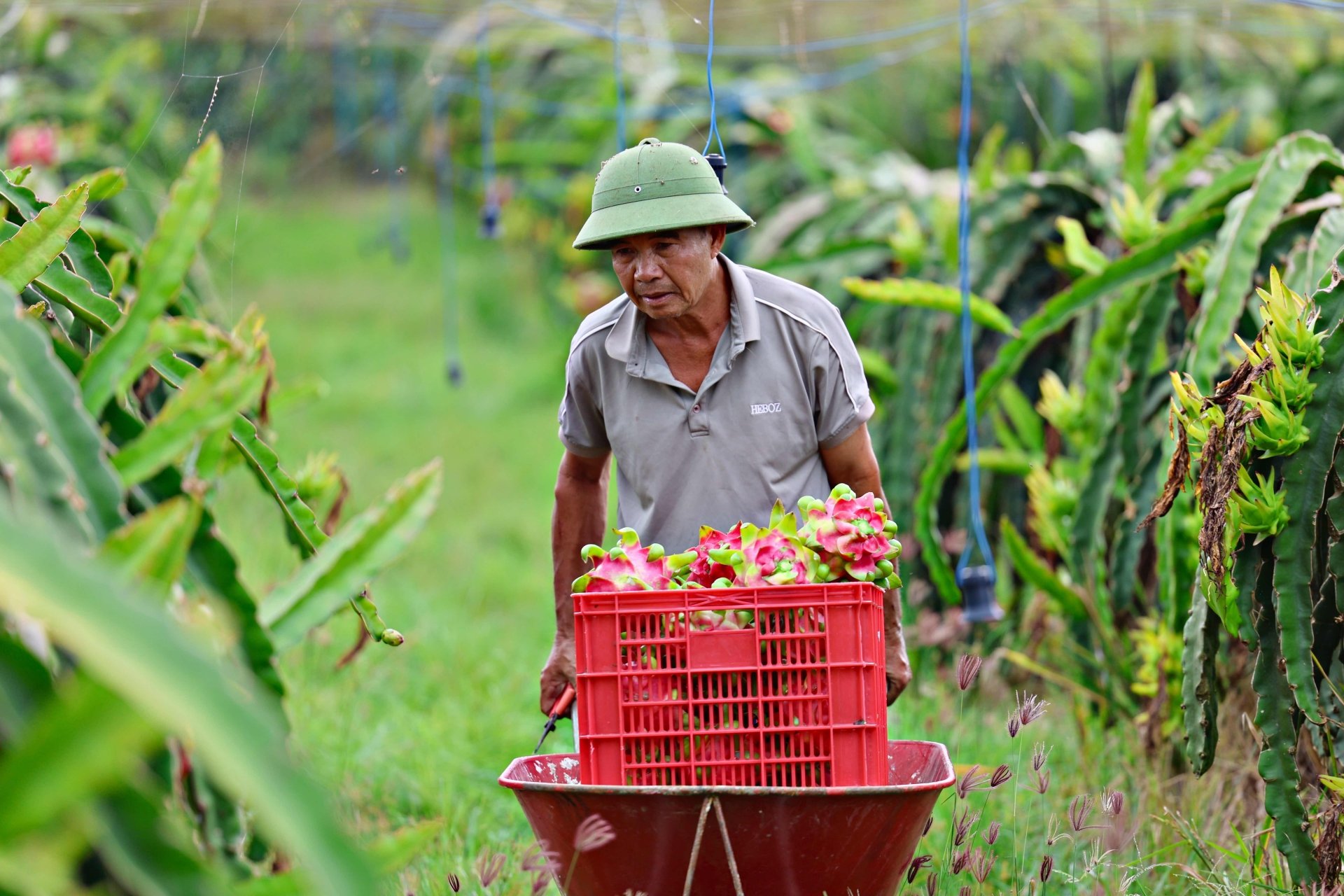 |
| Currently, the price of dragon fruit in Nam Ha fluctuates from 10,000 to 13,000 VND/kg, this is a low price compared to the investment people make. |
• FOR DRAGON FRUIT TO DEVELOP SUSTAINABLY
According to statistics from the Farmers' Association of Nam Ha commune, the area of dragon fruit in the commune is currently about 45 hectares. Some areas have been certified by VietGAP and have been granted a growing area code. These are passes for dragon fruit to access more demanding and high-end markets. Compared to 2020, the area has decreased significantly, about 40 hectares.
According to the assessment, to produce dragon fruit that meets standards in appearance, size and quality requires a lot of care and mastery of techniques, so many people are still hesitant to expand investment in this fruit.
In addition, unstable prices also make farmers unable to see the potential for sustainable and stable development compared to some other short-term vegetable and flower crops. The existing dragon fruit areas are not concentrated, planted quite fragmented, scattered in 3 or 4 villages, making it difficult to meet uniform quality standards.
In Nam Ha commune, there are currently Nam Ha Fruit Tree Cooperative and Son Hai High-Tech Agricultural Cooperative, which are the two main units purchasing and consuming dragon fruit in the commune and neighboring communes .
Ms. Tran Thi Hai - Director of Son Hai High-Tech Agricultural Cooperative said that the goal of the Cooperative is to target the export market for local agricultural products. Established at the end of 2024, the Cooperative currently has 7 members and is continuing to expand its links to purchase agricultural products from gardeners inside and outside the commune.
Recently, the cooperative boldly invested more than 23 billion VND in cold storage systems, processing facilities, packaging machinery, and transportation from Nam Ha commune, Lam Ha district to domestic markets. According to Ms. Hai, dragon fruit grown in Nam Ha in particular and some localities of Lam Ha is highly appreciated by the market.
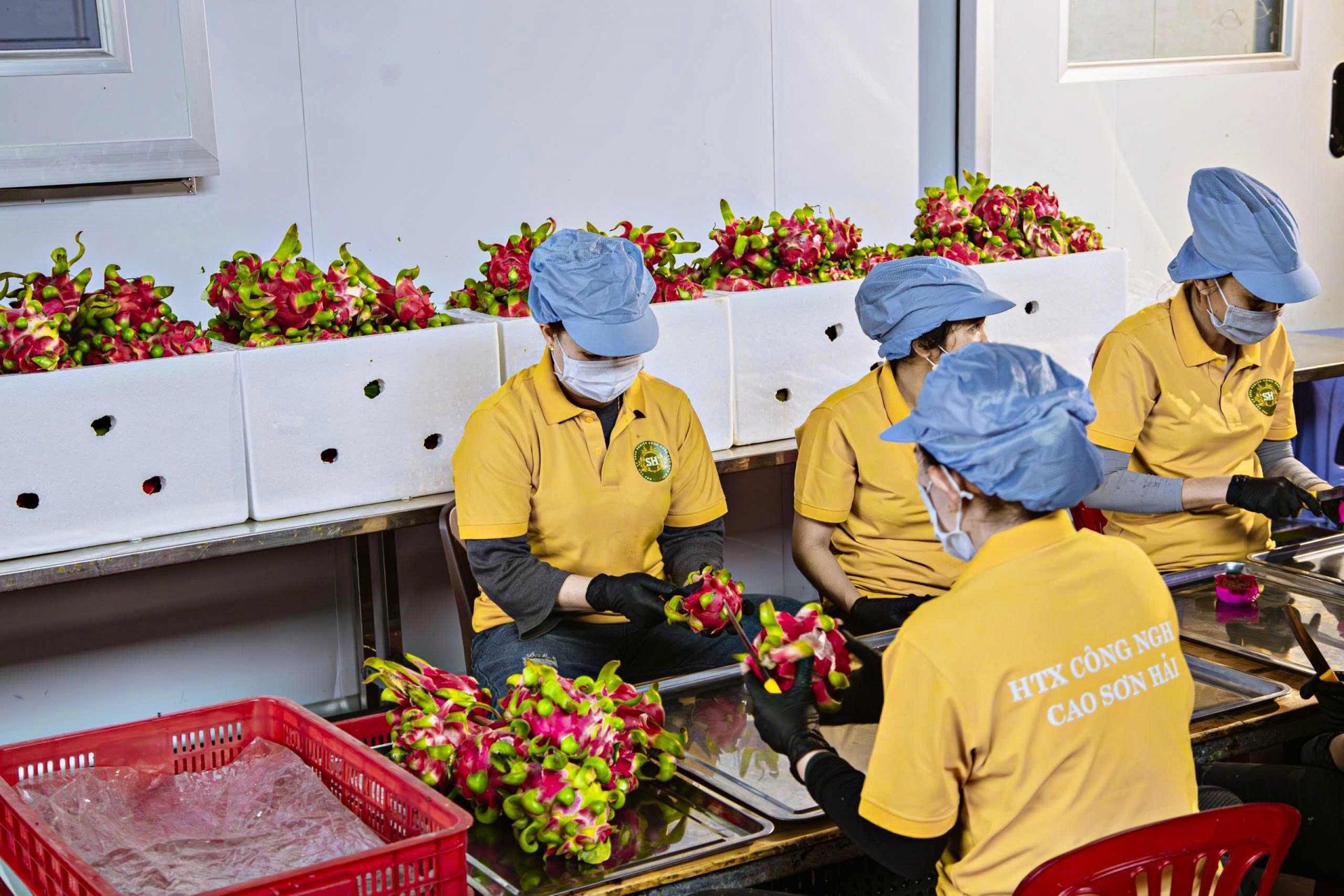 |
| Processing dragon fruit at Son Hai High-tech Agricultural Cooperative in Nam Ha commune, Lam Ha district, Lam Dong province |
However, the dragon fruit growing area is still fragmented and scattered, so it does not have a competitive advantage compared to other famous dragon fruit growing areas in other localities . The cooperative is purchasing about 80% of the dragon fruit output in the areas of Nam Ha, Gia Lam communes, Nam Ban town... with an area of about 60 hectares, of which 10 hectares have been granted a growing area code.
Every month, Son Hai High-Tech Agricultural Cooperative supplies the market with about 70-100 tons of fresh fruit, mainly for the domestic market, concentrated in the northern provinces. For some dragon fruits with unattractive appearance, the Cooperative is experimenting with freezing them, which has initially been well received by the market.
According to Lam Ha District People's Committee , to develop dragon fruit in Nam Ha as well as some neighboring communes for sustainable development, functional units and the district's agricultural sector always guide farmers towards producing clean, safe and quality products to meet consumer demand.
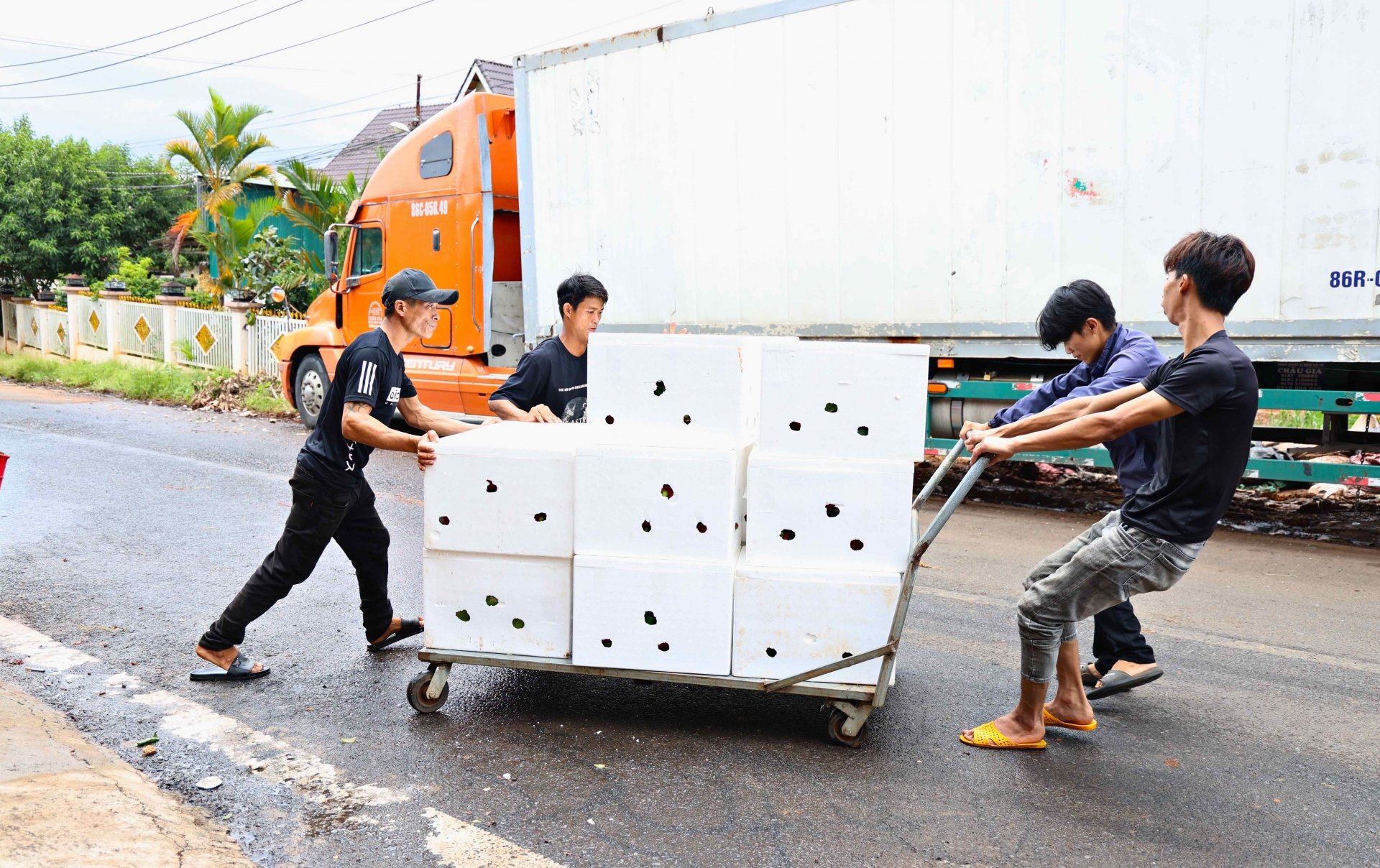 |
| Nam Ha dragon fruit has good quality and is consumed in most domestic markets, but the price is not really attractive to people due to lack of stability. |
In recent times, the district has directed specialized departments to focus on propaganda, training, and guidance for people to produce dragon fruit according to GAP and organic standards. At the same time, it has focused on building codes for growing areas, packaging facilities, and pest management to meet the needs of consumers who increasingly demand high quality .
In addition, the locality focuses on supporting and creating conditions for cooperatives to closely link with farmers in both input and output. This aims to build a large raw material area with uniform quality, ensuring export demand with more stable prices .
Source: https://baolamdong.vn/kinh-te/202506/can-dau-ra-on-dinh-thanh-long-ruot-do-tai-nam-ha-71a5c22/






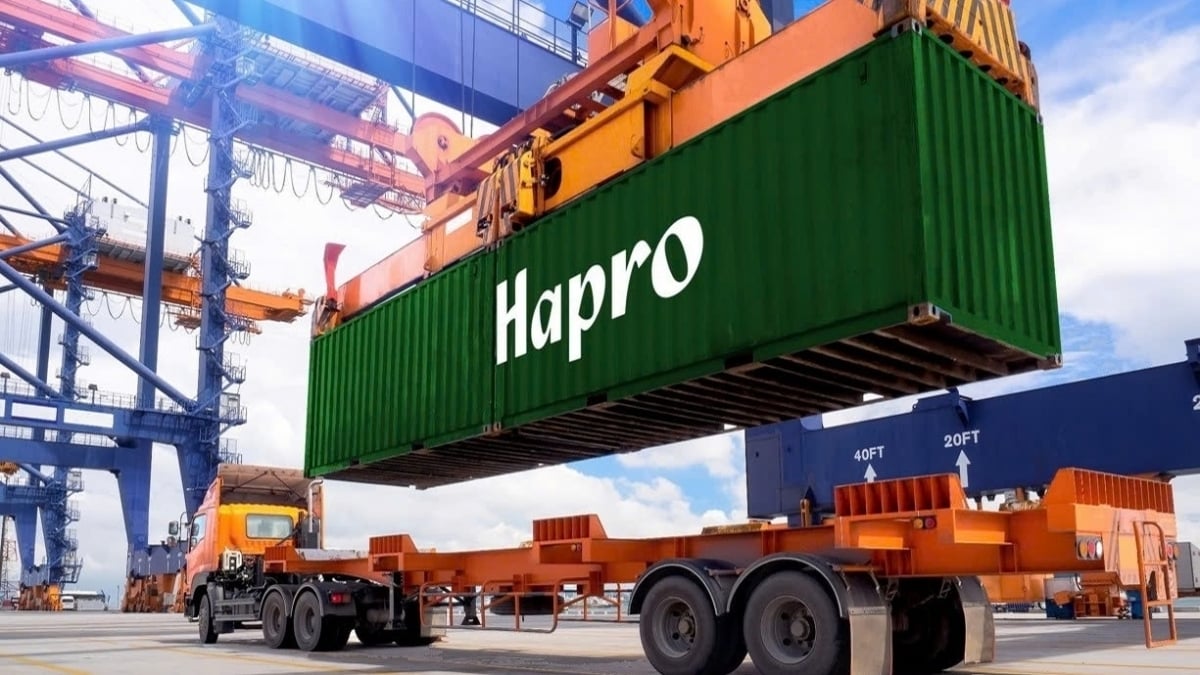

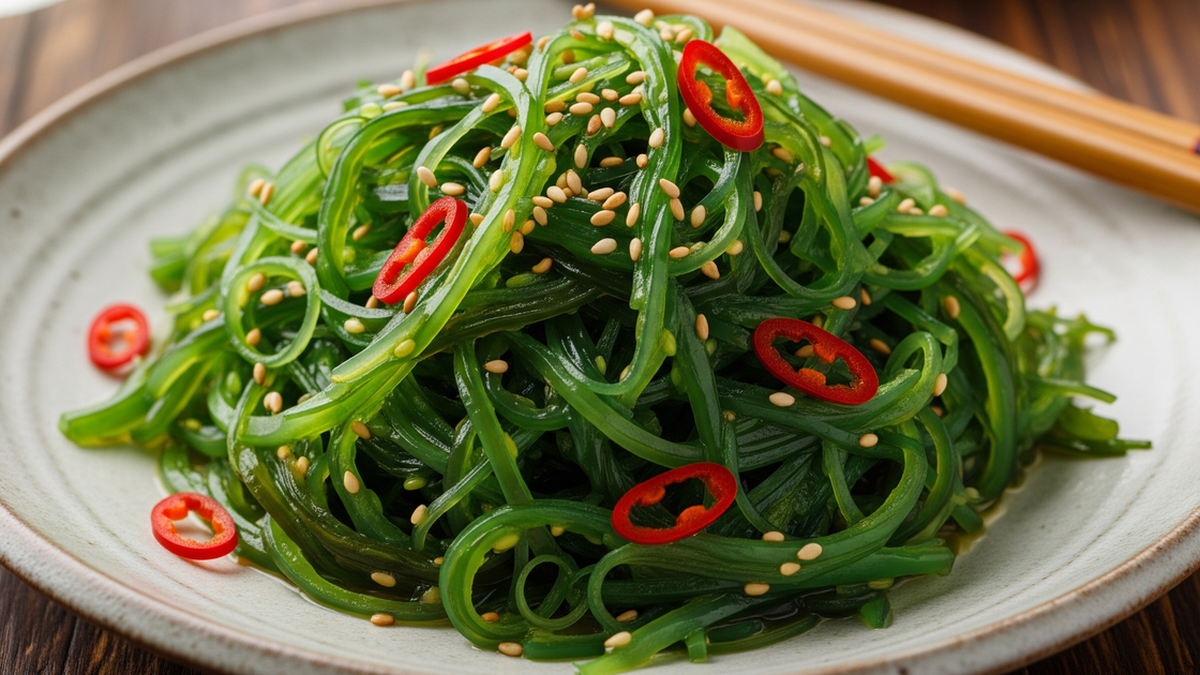




















![[Photo] Nghe An: Provincial Road 543D seriously eroded due to floods](https://vphoto.vietnam.vn/thumb/1200x675/vietnam/resource/IMAGE/2025/8/5/5759d3837c26428799f6d929fa274493)


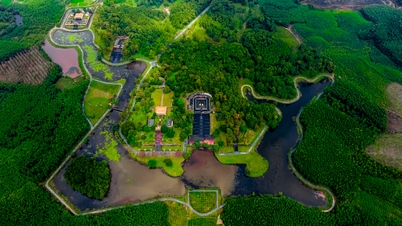



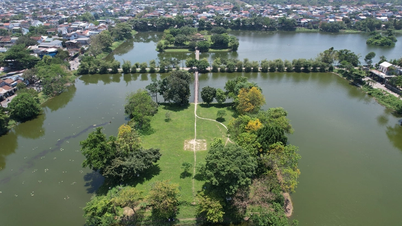
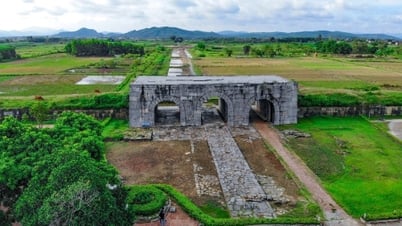

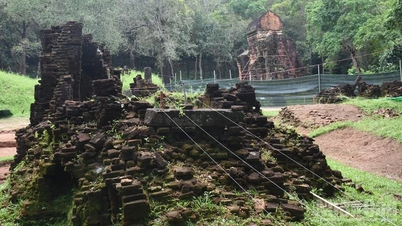










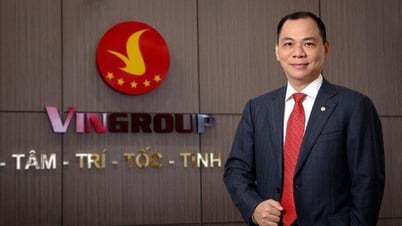






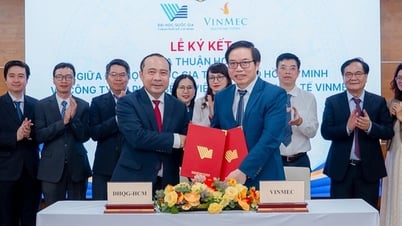


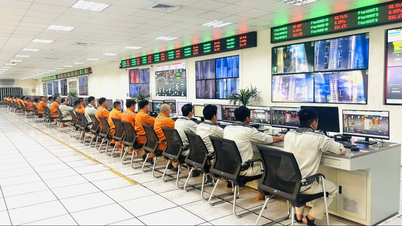

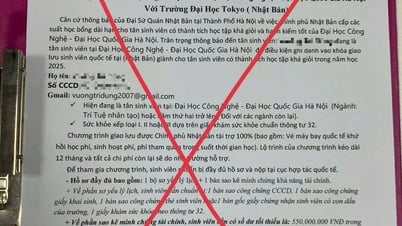











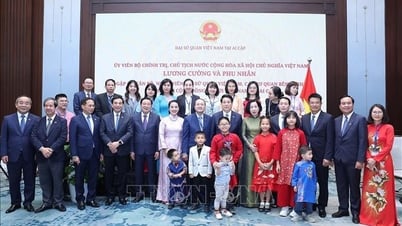
























Comment (0)